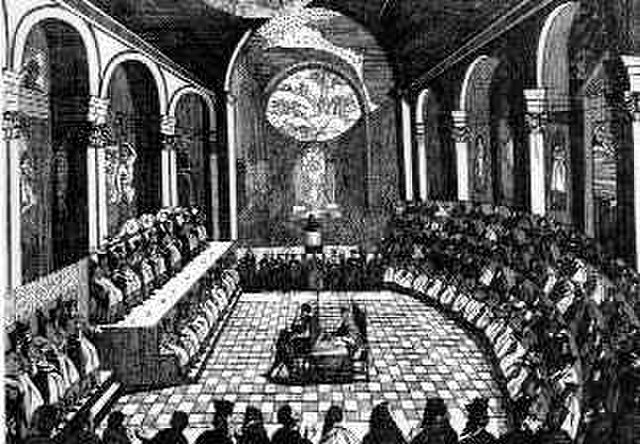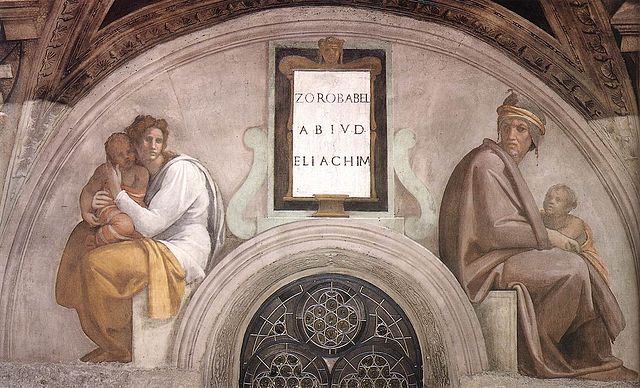Pope Stephen II was born a Roman aristocrat and member of the Orsini family. Stephen was the bishop of Rome from 26 March 752 to his death. Stephen II marks the historical delineation between the Byzantine Papacy and the Frankish Papacy. During Stephen's pontificate, Rome was facing invasion by the Lombards when Stephen II went to Paris to seek assistance from Pepin the Short. Pepin defeated the Lombards and made a gift of land to the pope, eventually leading to the establishment of the Papal States.
Painting depicting Abbot Fulrad giving Pepin's written guarantee to Stephen II
The pope, also known as the supreme pontiff, Roman pontiff or sovereign pontiff, is the bishop of Rome, visible head of the worldwide Catholic Church, and has also served as the head of state or sovereign of the Papal States and later the Vatican City State since the eighth century. From a Catholic viewpoint, the primacy of the bishop of Rome is largely derived from his role as the apostolic successor to Saint Peter, to whom primacy was conferred by Jesus, who gave Peter the Keys of Heaven and the powers of "binding and loosing", naming him as the "rock" upon which the Church would be built. The current pope is Francis, who was elected on 13 March 2013.
Pope Francis in 2021
Gregory the Great (c. 540–604), in a painting by Carlo Saraceni, c. 1610, Rome.
As part of the Catholic Reformation, Pope Paul III (1534–1549) initiated the Council of Trent (1545–1563), which established the triumph of the papacy over those who sought to reconcile with Protestants or oppose papal claims.
A fresco of Eliakim in Sistine Chapel, Vatican City





